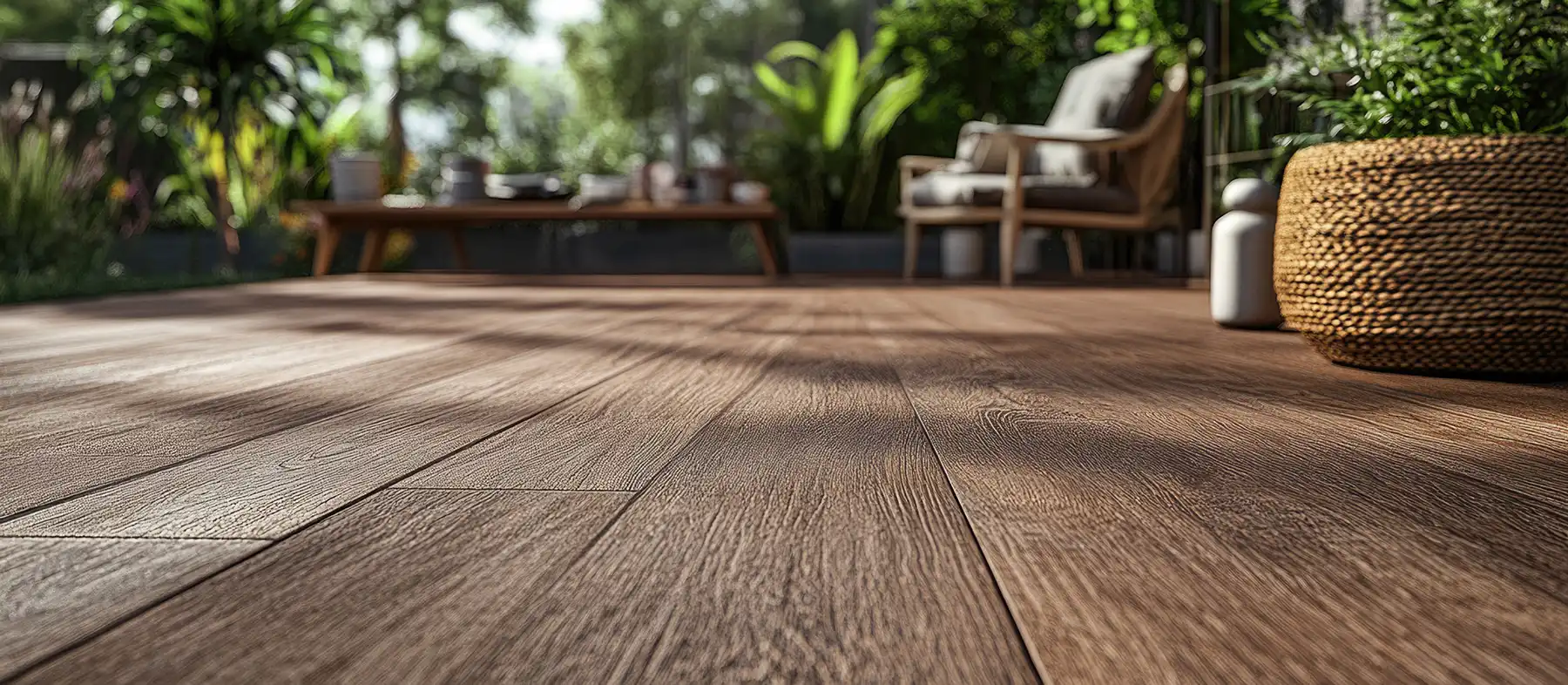Most homeowners are all about saving energy and lowering their utility bills. But energy-saving home features aren’t just good for your wallet—they’re good for the planet, too!
Twenty percent of America’s greenhouse gas emissions are from residential energy use. The energy you use to heat, cool, and power your home has real environmental impacts. While your home’s carbon footprint may be small on its own, the environmental impact adds up quickly when you consider that there are 141 million homes in the U.S. and millions more across the globe.
Luckily, the clean energy industry is booming, especially in Iowa. The Hawkeye State is home to more than 13,000 “green” workers. That number is expected to increase 18.8% over the next 5 years—much faster than the rest of the nation. If you’re looking to save some money on your monthly bills or want to do a little good for the planet—or both—Iowa is a great place to be.
Without further ado, here are eight ways to make your home more green.
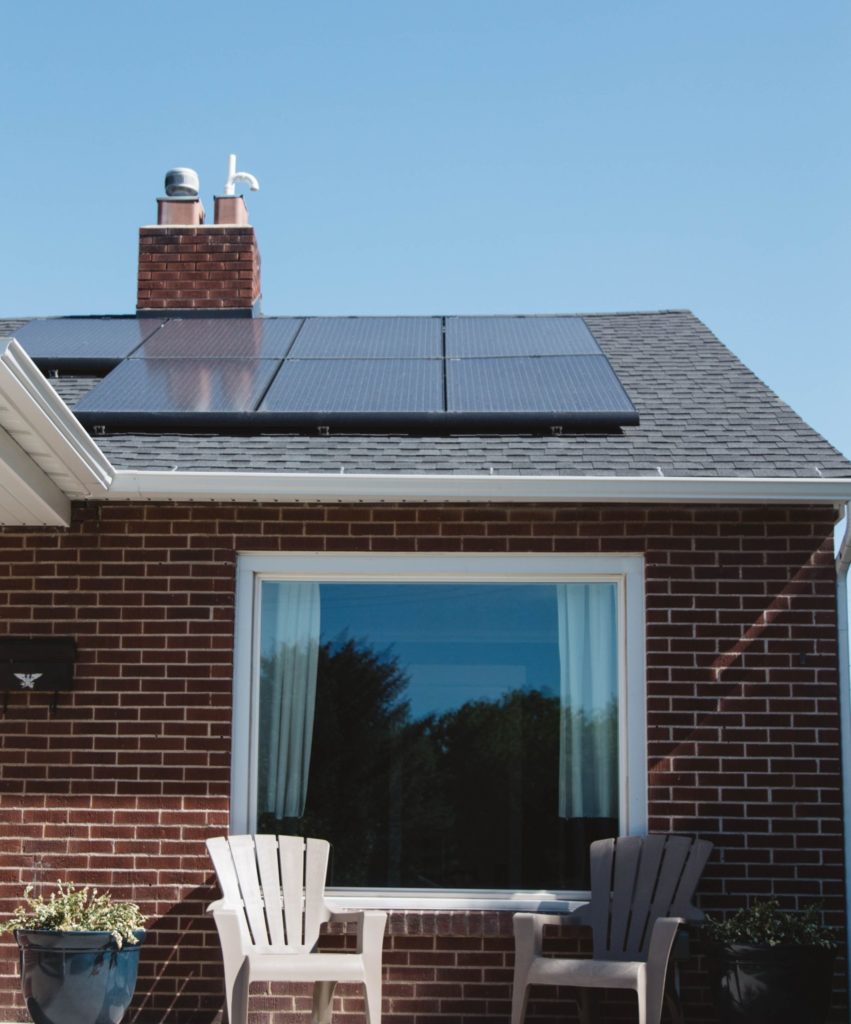
1. Soak up the Sun with Solar Panels
Let’s start with one of the most obvious choices: solar panels.
Every year, more and more homeowners are opting to add solar panels to their roofs. Roughly 3% of single-family homes in the U.S. have installed solar panels so far. That number may seem small, but that equates to approximately 2.7 million residential solar systems.
While extremely effective, solar panels do require an up-front investment. On average, it costs $25,812 to install solar panels on a home in the United States. That number has been decreasing over time as technology has become more efficient and solar energy systems have become more popular. According to Moxie Solar, a North Liberty-based solar company, the cost of solar energy has dropped 20% in the last 5 years.
The big question for most homeowners is: is it worth it? There are ways to calculate how much money solar panels can save you on your energy bills, but generally speaking, there is a clear return on investment (ROI). Moxie states that solar panels pay themselves off in 8-12 years, and the panels themselves last up to 25 years. That means 13+ years of savings!
Aside from the cost, there are several major factors to consider before you jump on the solar panel bandwagon.
The direction your roof faces.
Southern roofs are the perfect place to install solar panels. If a southern roof isn’t available, southeast and southwest roof slopes work well, too.
The angle of your roof.
A 30° pitch is ideal for solar panel installation. While there is a bit of wiggle room, anything more than 40° is usually too steep to be effective.
The amount of shade.
Even if your home has a southern roof at a perfect 30° angle, it’s a moot point if your roof is in shade for a majority of the day. The height and placement of the trees in your yard or other structures that block sunlight should be taken into consideration.
Your roofing material.
Asphalt shingles and metal roofs tend to work best for solar panel installation. Wood and slate roofs, however, can be too brittle or pose a fire hazard. Therefore, they are usually incompatible with solar panels.
The condition of your roof.
If your roof will need to be replaced in the near future, replace it before adding solar panels. The last thing you want to do is pay thousands of dollars to install solar panels, only to need to take them off to redo your roof.
On the bright side, if your roof is in good condition, solar panels can help keep them that way. By protecting your roof from harsh elements like the sun, rain, and wind, solar panels can actually extend the life of your roof (when installed professionally). And no need to fear for the solar panels themselves—they’re built to withstand extreme weather conditions.
How much roof space you have available.
Simply put, the more space you have, the more solar panels your roof can hold, the more energy your panels can produce, and the more savings you’ll see.
How long you plan to stay in the home.
It’s worth noting that adding solar panels to your home doesn’t mean you’ll get a dollar-for-dollar return on your investment when you go to sell your home, especially if you sell soon after the solar panels are installed. While some buyers are willing to pay more for this eco-friendly feature, it’s not a guarantee.
“At the end of the day, it’s best to install solar panels with the intent of saving money over time, not making money on a re-sale.”
What local incentives are available.
Some states, counties, and cities even offer incentives to make it easier for people to go solar. For example, Grow Solar, a program that ran in Johnson and Linn Counties from 2017–2021, offered solar energy education and competitive pricing to reduce homeowners’ upfront cost of insulation. The result: 477 properties in the area install solar panels, for a total of 3,321 kilowatts of solar energy.
How much you’ll save with the Federal Income Tax Credit (ITC).
To encourage homeowners to make their homes a little greener, the U.S. government is offering an income tax credit to those who install solar panels. This means that on your federal income taxes, you can claim a tax credit for a percentage of the cost of the solar photovoltaic (PV) system.
For systems installed between 2020-2022, the tax credit is 26%. So if you spent $25,000 on a solar system in 2022, you would get a credit of $6,500 on your taxes!
For systems installed in 2023, there will be a 22% tax credit. The incentive will expire in 2024 unless Congress chooses to renew it. So if you’re thinking about going solar, there’s no time like the present.
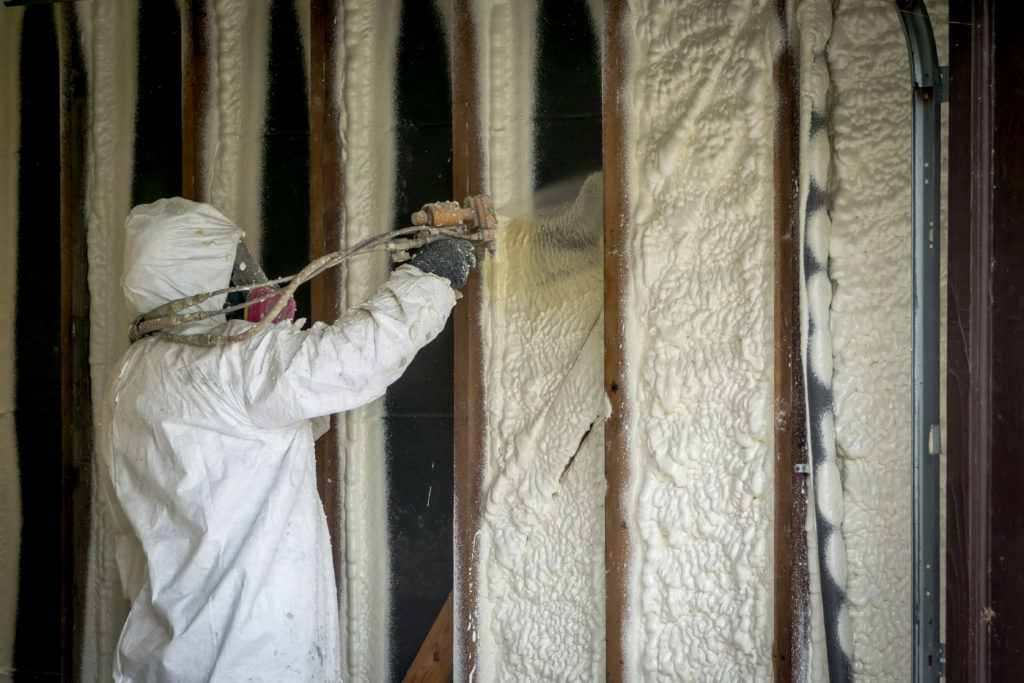
2. Improve Your Insulation
While solar panels help create clean energy, insulation helps prevent the loss of that energy.
A poorly insulated home could cost you hundreds of dollars per year. Without proper insulation, heat escapes in the winter and cool air escapes during the summer. Your AC or furnace kicks in more frequently to keep up with this loss and maintain your home’s temperature, thus driving up your energy use and your utility bill.
The good news is that you can add insulation to your home to reduce energy loss. While this process is a bit harder for existing homes than it is for new construction homes, it is still definitely doable.
Is your house under-insulated?
It’s estimated that as much as 90% of single-family homes in the U.S. are under-insulated, which translates to a lot of unnecessary energy being spent every year on heating and cooling across the nation. Older homes—especially homes built before 1960—are more likely to have insufficient insulation. If you notice a drastic temperature change when walking from room to room in your house, poor insulation could be to blame.
Energy Audits
Sometimes, though, it can be hard to tell if your home is under-insulated. Luckily, many energy companies (such as MidAmerican) offer free energy audits or free energy efficiency kits so you can do an audit yourself. Ask your energy company if they have any programs to assist in measuring your home’s energy use and efficiency.
Insulation Cost
The cost of insulating a home varies greatly depending on the size of your home and the type of insulation you choose. According to Home Advisor, the average cost of installing insulation is between $1 and $5 per square foot.
The good news? Your up-front investment would likely pay itself off in just a few years. The EPA estimates that proper insulation could save Iowans up to 18% on their annual utility bill. And unlike solar panels, which provide the greatest benefit during the sunny summer months, insulation will save you money year-round.
More good news: the City of Iowa City also offers loans through their Energy Efficiency Program to help homeowners cover the cost of making their home more green—including installing insulation.
Types of Insulation
When you think of insulation, pink fiberglass usually comes to mind. Foam insulation is also a popular choice, whether you opt for spray foam or foam boards.
Many types of insulation—including most fiberglass and mineral wool—are made partially from recycled materials. There are also several alternative insulation products on the rise for those that want to go the extra eco-friendly mile: wool, cotton, cork, denim (yes, denim), and cellulose (made from recycled paper).

3. Flip the Switch: Opt for LED Lighting + Motion Lights
Reducing your home’s environmental footprint isn’t always about adding green features. Sometimes it means replacing everyday things with more eco-friendly versions.
LED Lights
One of the easiest—and cheapest—swaps you can make: switching out your regular fluorescent light bulbs for LED. LED lighting produces light up to 90% more efficiently than traditional light bulbs. They also last up to 25 times longer than normal incandescent bulbs—a win-win.
Want to take your “green” lighting even further? Look into automated lights and motion lighting. They’re especially helpful if you or someone in your household has a bad habit of accidentally leaving lights on.
Motion Lights
Motion lights turn on only when they sense movement in a room so that light is only being used when necessary. Many motion lights automatically shut off after a set amount of time—for example, if it hasn’t detected motion in the last 90 seconds—to prevent energy waste. They’re most often used on home exteriors, doubling as a security measure to deter intruders, but they can also be quite handy indoors in garages, closets, or even as night lights.
Automated/Smart Lights
Automated lights, on the other hand, are smart lights that you can control when you’re not at home. Here, the energy savings come from the ability to control lights from your phone, meaning you can check—and turn off—unnecessary lights without being home. Left for a trip and can’t remember if you left the kitchen light on? Just got snug in bed and forgot to shut off the living room lamp downstairs? No problem.
Natural Light
Of course, the easiest way to save energy on your lighting is not to use your lights in the first place. Leverage as much of your home’s natural light as possible, especially on bright summer days where the sun shines for 12+ hours per day. Your electricity bill—and your houseplants—will thank you later.
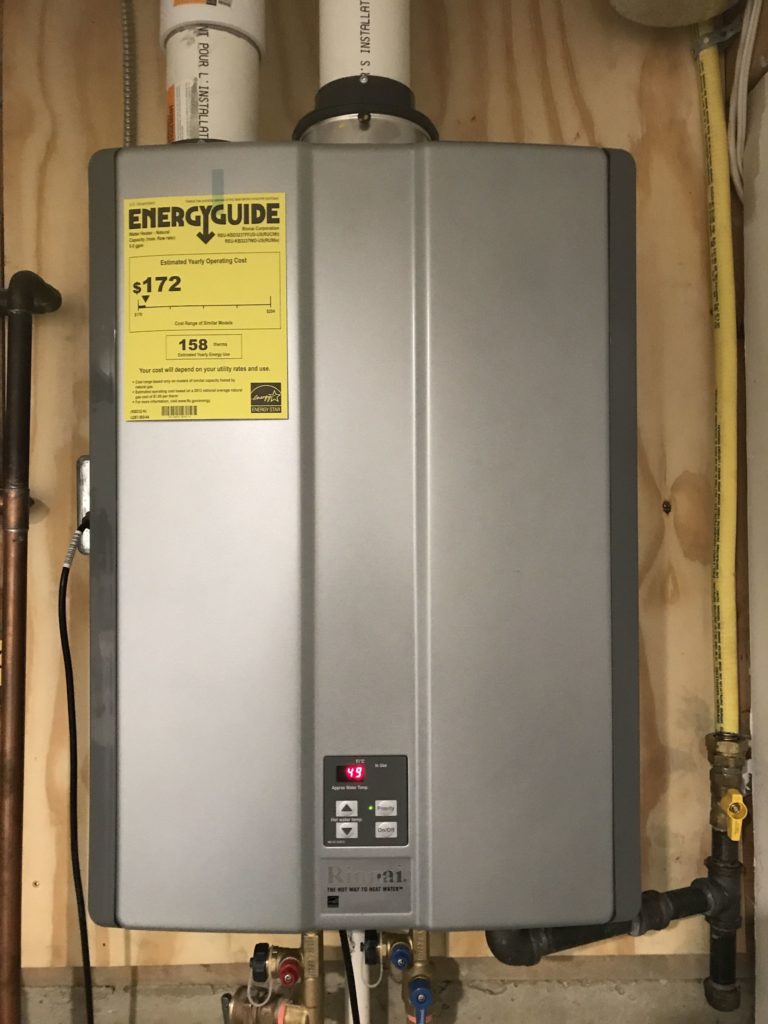 Photo Credit: Green Energy Futures on Flickr
Photo Credit: Green Energy Futures on Flickr
4. Upgrade your Water Heater
One big consumer of energy in your home that people tend to overlook? Your water heater. According to the Department of Energy, water heaters account for 17% of a home’s energy use on average. That’s more energy than your fridge, washer, dryer, and dishwasher combined!
Luckily, there are several ways you can help reduce your water heater’s energy consumption—without sacrificing your beloved scalding-hot showers.
Invest in a More Energy Efficient Water Heater
This can be as simple as replacing your old gas or electric water heater for a newer model, as efficiency is always improving. It can also mean getting a water heater designed specifically to be energy efficient, such as a tankless water heater or a heat pump water heater.
Tankless water heaters are exactly what they sound like: they have no tank. Unlike normal water heaters, which have a reservoir of water that is kept hot at all times, a tankless water heater warms up your water on demand. That way, you’re only spending energy to heat water when it’s truly needed. Though they do cost more than a standard water heaters, they can be up to 34% more efficient than their more basic counterparts.
Another popular choice: heat pump water heaters. These heaters essentially function as a fridge in reverse—they pull heat from the surrounding air and transfer it to the water. Heat pump water heaters use less than half the energy of a standard water heater, resulting in big savings.
Turn Down Your Water Heater Thermostat
The typical setting for most water heaters is 140°F. However, 120°F is sufficient for most household tasks like showering, doing laundry, and washing dishes. Twenty degrees may not seem like much, but lowering this temperature can make a sizable difference in your home’s energy usage overtime.
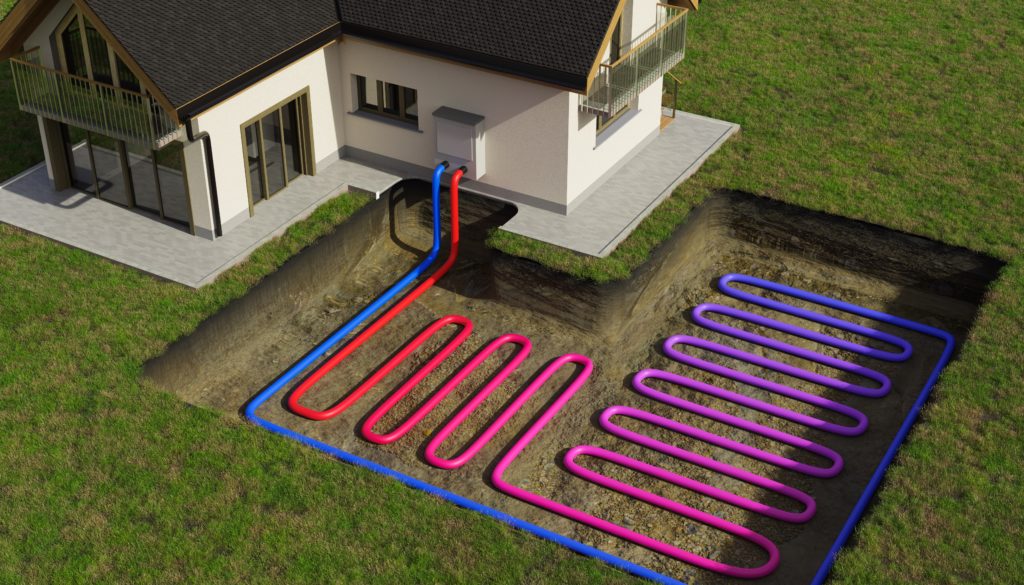
5. Go Geothermal
Speaking of adjusting temperature, it’s time to address the biggest energy hog in your home: your HVAC system. Air conditioning and heating are officially the largest sources of energy use in your home, accounting for almost half of your electricity and gas consumption. However, it also presents the biggest opportunity to reduce your home’s carbon emissions.
How Geothermal Works
Geothermal is considered the gold standard of energy efficient home heating and cooling. Rather than using electricity or gas to create heat, geothermal systems harness the Earth’s naturally-occuring heat. In the winter, they move heat from just below the Earth’s surface into your home. In the summer, they take the heat from your home and send it back into the Earth to dissipate, cooling your home.
Cost vs. Savings
The biggest barrier to going geothermal is the cost. Because it requires installing a piping system beneath the soil near your home, geothermal costs significantly more than its traditional counterpart. Depending on the size of your home and the type of your soil, putting in a geothermal system can cost anywhere from $18,000 to $30,000.
For those who are able to foot the upfront cost, the savings make the investment worth it. According to the Department of Energy (DOE), geothermal systems reduce energy consumption by 25-50%. In the dead of winter, when they are at their most useful, geothermal heat pumps can be up to 300% – 600% more efficient than traditional furnaces!
Other Advantages of Geothermal
Other geothermal benefits include less temperature fluctuation in your home. Even though the temperature above ground changes drastically between the seasons, just a few feet below the surface, the Earth is a steady 55° Fahrenheit.
Last but not least, geothermal systems are also quieter than traditional HVAC units. With no above-ground equipment outside of your home, there’s nothing to make noise to bother your neighbors or disturb the peace and quiet of your backyard.
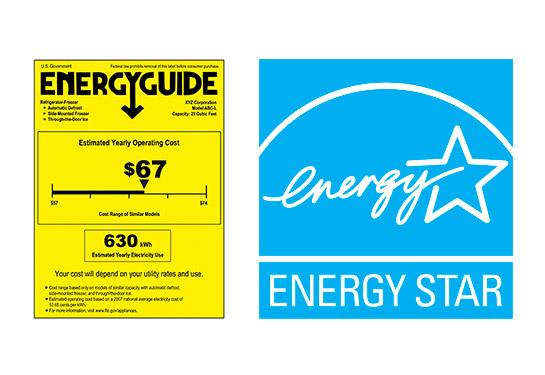 Photo Credit: energystar.gov
Photo Credit: energystar.gov
6. ENERGY STAR Everything
Lighting, water heaters, and HVAC systems are just the tip of the green home iceberg. Nearly every home appliance these days has an energy-efficient model available, and technology is improving all the time.
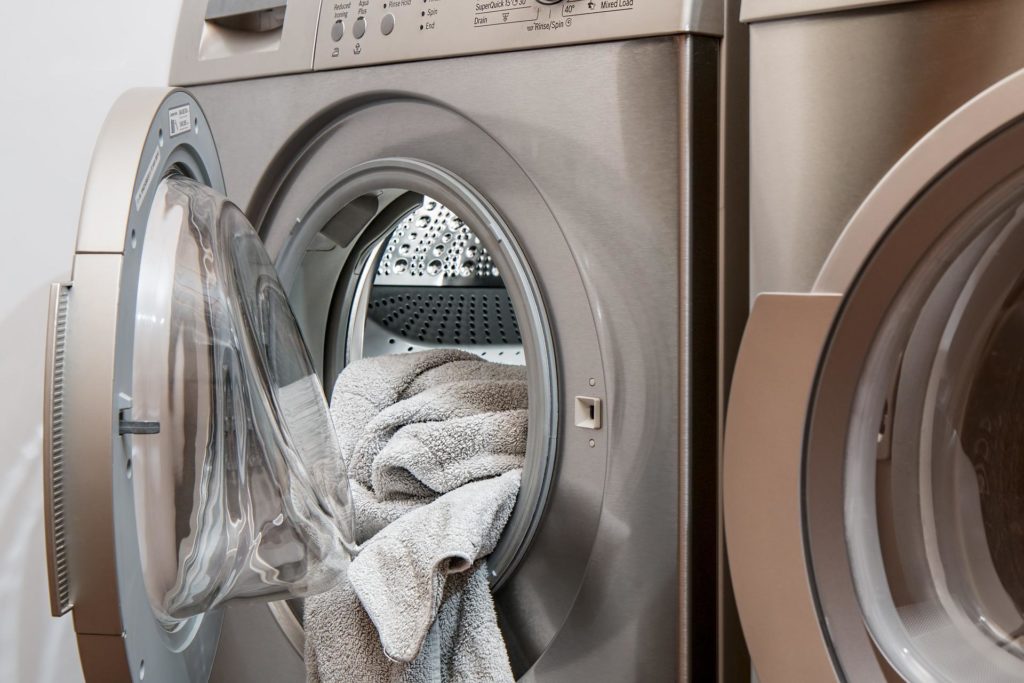
The EPA (Environmental Protection Agency)’s ENERGY STAR designation has made it easy to determine which appliances are actually eco-friendly. In order to earn the ENERGY STAR certification, an appliance must meet strict energy-efficiency specifications showing that they truly lower utility bills and help protect the environment.
ENERGY STAR’s website has a handy list of every type of product you can think of that has earned the ENERGY STAR designation—thermostats, dishwashers, fridges, washers, dryers, dehumidifiers, air purifiers, and more. Or, when you’re choosing new appliances for your home, look for the little blue square with a star.
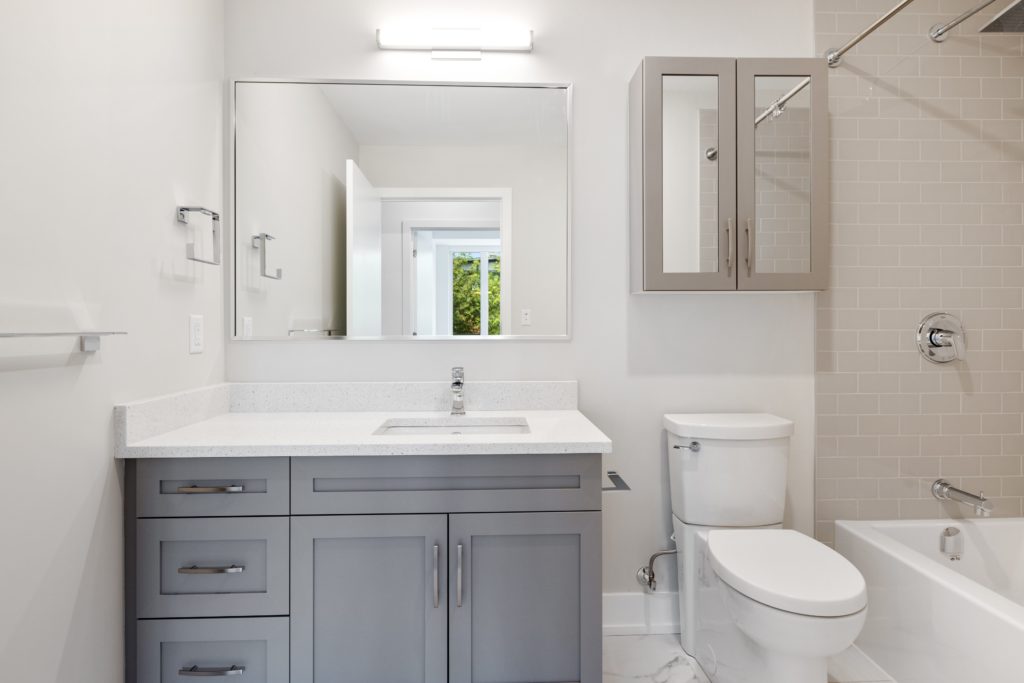
7. Opt for a Low-Flush Toilet
We’ve talked a lot about saving energy, but now we turn our attention to saving a different resource: water.
On average, toilets account for nearly 30% of your home’s indoor water consumption. The EPA has mandated that toilets in the U.S. can use a maximum of 1.6 gallons of water per flush (GPF). Despite the fact that all new toilets comply with this standard, there are some toilets that outperform others.
Recent advancements have allowed certain toilets—dubbed low-flush toilets—to use even less water, as little as 1.28 GPF. That 0.32 GPF savings may not seem like much, but over the course of one year, it could save the average family nearly 13,000 gallons of water per year. That’s $140/year in savings on water, and almost $3,000 over the toilet’s lifetime.
In other words, your regular toilet may be flushing money away—literally.
The EPA has made it easy to find these eco-friendly toilets, too. The next time you’re in the market for a toilet, look for the WaterSense designation, which certifies that the toilet meets the EPA’s rigorous standards for performance and water-saving efficiency.
Pro Tip: the WaterSense designation is also available for any other water-using product in your home, such as faucets and showerheads. Check out the full product list here.
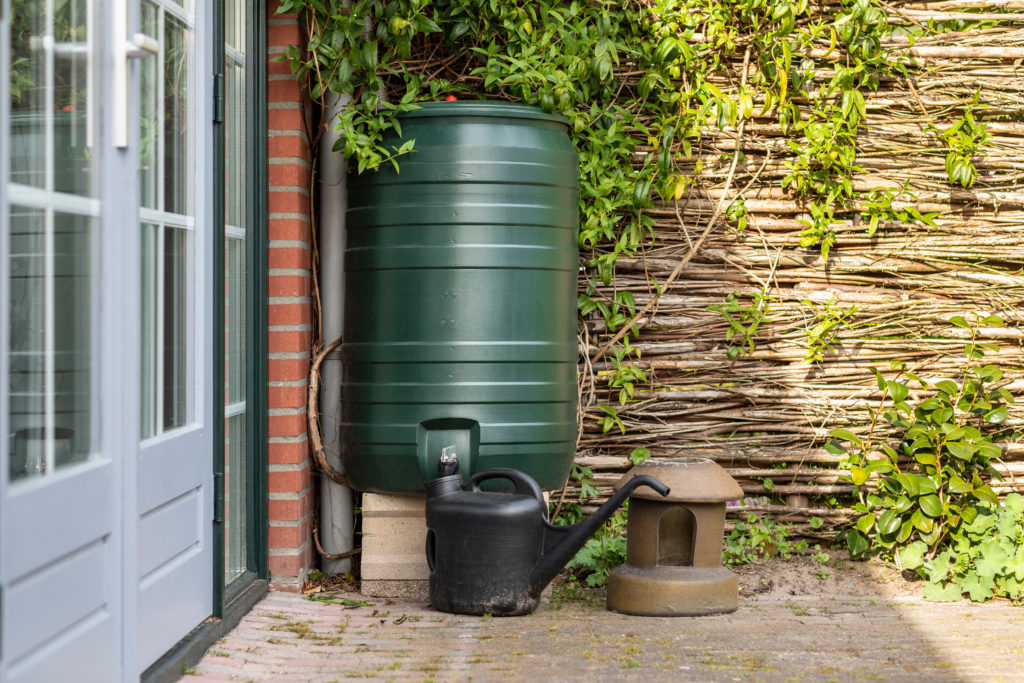
8. Recycle the Rain with Rain Water Barrels
Water is a finite resource, meaning there is only so much of it available in the world, and it’s impossible to create more if we run out. The average American family uses 300 gallons of water per day in their home. That’s why it’s important to make the most of the water we do have—including rain.
Rain water barrels are exactly what they sound like. These barrels collect runoff from your roof, which can then be repurposed for your lawn, garden, or to water your indoor plants. While this water isn’t safe for drinking, it does help conserve water by reducing the amount of H2O you need to keep your landscaping in tip-top shape. Plus, it’s completely free!
Live Green to Save Green
Making your home more green while saving some “green”? Sounds like a win-win to us!
If you’re buying a home, keep an eye out for these features during showings. If you’re selling, be sure to tell your REALTOR® so they can showcase any energy efficient aspects of your home in the online listing and during tours.
Green homes and smart homes often go hand-in-hand. If you want to make your home a little smarter while you’re at it, check out our list of the 15 most popular smart home devices.
In the market for a new home? Whether a green home is a “must-have” or just a “nice-to-have,” your Urban Acres agent is here to help you find the perfect place.


